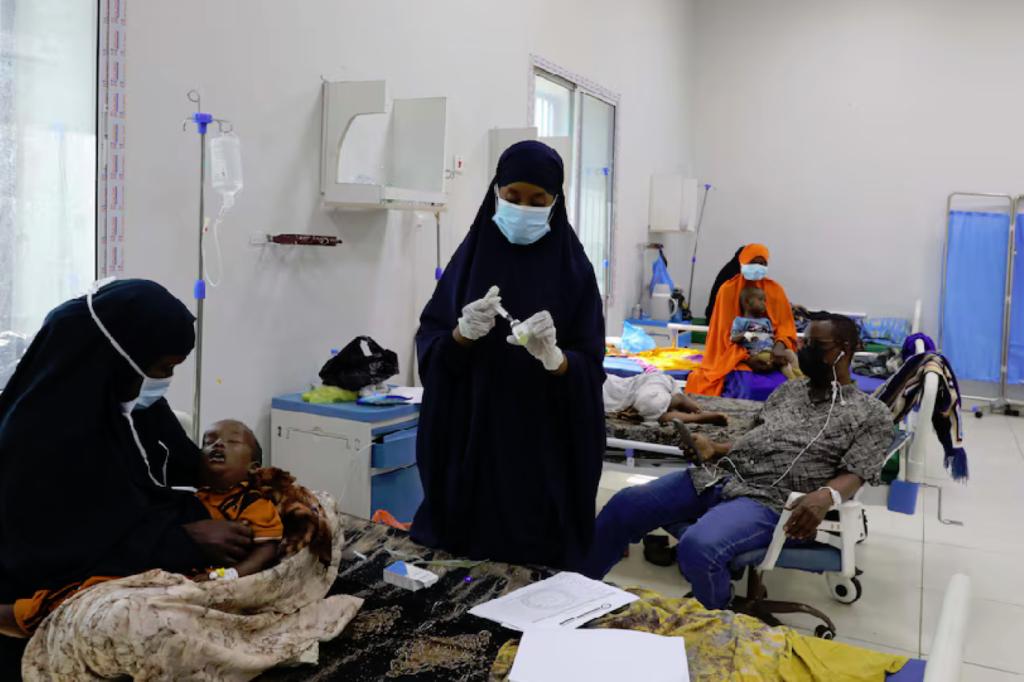Somalia’s Ministry of Health has issued a grave warning over the sharp rise in child deaths following the diphtheria epidemic return to Somalia.
This disease once believed to be globally controlled.
But now the outbreak is spreading rapidly across the country, driven by vaccine shortages, reduced donor funding, and a fragile health system, putting millions of children at risk.
Diphtheria Epidemic Returns to Somalia and Takes the Lives of 120 Persons
According to Abdulmajid Siyad, Public Health Advisor at the Federal Ministry of Health, Somalia has recorded 2,728 diphtheria cases and 120 related deaths, with a fatality rate of 4%.
First, the disease emerged among displaced communities in Mahaday District in 2023 and has continued to spread, becoming one of the country’s most severe health crises by 2025.
%80 of Diphtheria Cases Are from Children
Siyad reported that about 80% of patients are under 15, and most have not received a single vaccine dose. He said: “This is not just an outbreak — it’s the return of a disease that should have been prevented.”
Noting that cases have quadrupled compared to last year.
Hospitals are overwhelmed, medical supplies have run out, and preventable deaths are occurring daily.
At Mogadishu’s De Martino Hospital, diphtheria admissions have surged from 49 cases last year to nearly 500 cases in the first four months of 2025, with deaths tripling.

Global Concern Over Health System Fragility
Health officials warn that Diphtheria epidemic return to Somalia highlights the country fragile healthcare infrastructure and declining immunization coverage.
Siyad stressed: “This outbreak is a wake-up call.
Unless immediate action is taken, this will not be the last preventable epidemic Somalia faces.”
Cross-border movement and weak regional health systems increase the risk of the disease spreading across the Horn of Africa, raising alarm among global health experts.
Diphtheria Epidemic Return to Somalia is Due to Vaccine Shortages and Funding Cuts
Health Minister Ali Haji Adam acknowledged that the government struggles to secure enough vaccines due to global shortages and the withdrawal of key donors.
The U.S. — previously Somalia’s main health aid provider.
Significantly reduced funding, forcing the closure of hundreds of clinics and mobile vaccination teams.
The Ministry of Health, supported by the World Health Organization (WHO), has trained frontline workers and distributed limited antitoxin supplies.
While conducting targeted vaccination campaigns.
However, coverage remains far below what is needed to contain the outbreak.
Impact of Funding Reductions on Diphtheria Epidemic
Since early 2025, cuts to health and nutrition programs have severely restricted services.
Eight hospitals, 40 primary health centers, and 16 mobile teams have halted operations across nine regions.
Without renewed funding, more programs could shut down by December 2025.
Leaving thousands without access to care.
The funding gap has also worsened malnutrition.
Over 300 nutrition centers closed and 350,000 people losing access to essential health and vaccination services.
Call for Renewed Investment
Somalia spends less than 7% of its national budget on healthcare.
This forces reliance on external donors such as Gavi, the Vaccine Alliance.
Yet, vaccination coverage remains dangerously low, especially in rural and conflict-affected areas.
Health experts warn that without urgent domestic and international investment, Somalia will continue to face recurring outbreaks of preventable diseases like measles, cholera, and diphtheria, putting vulnerable populations — especially children — at ongoing risk.


